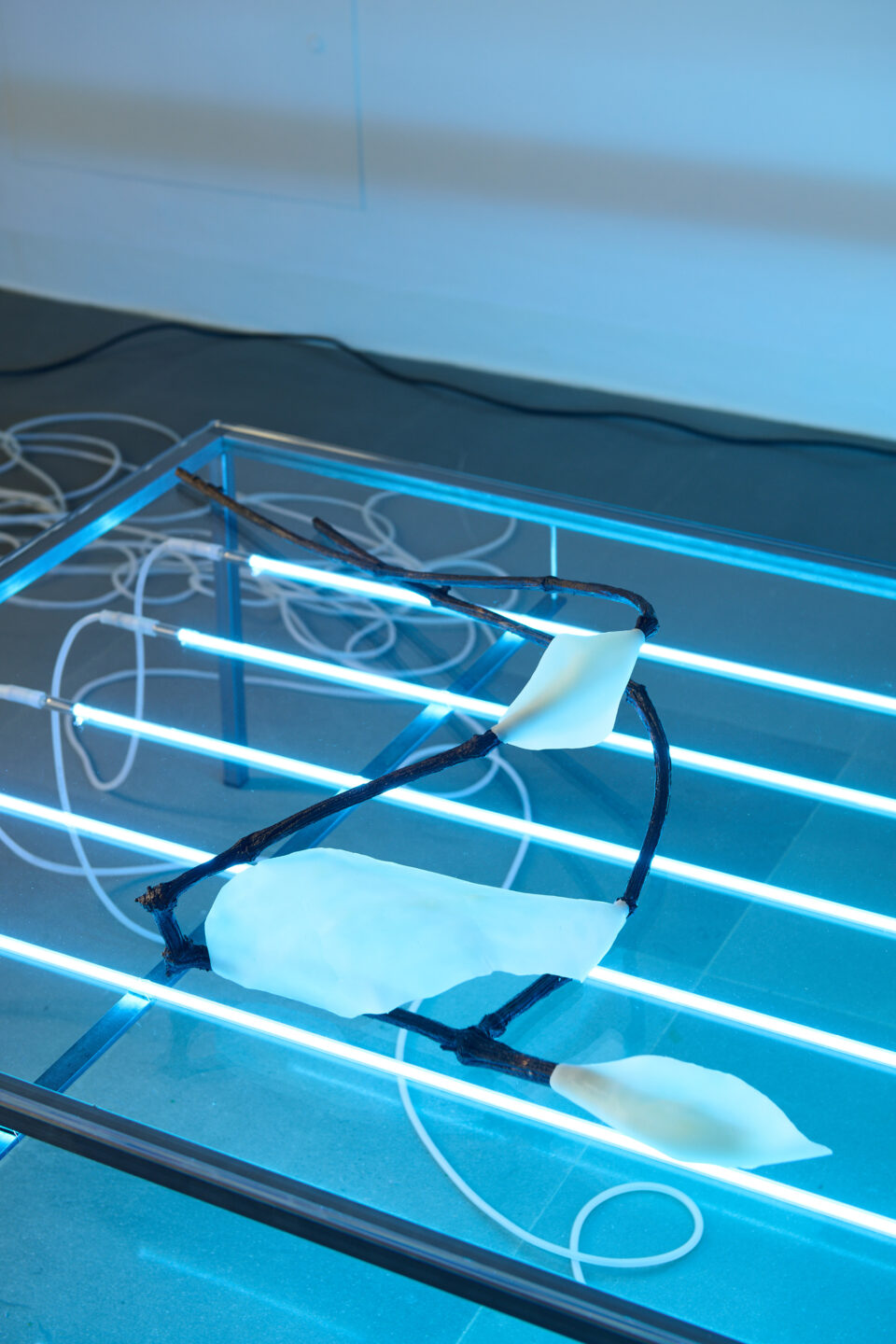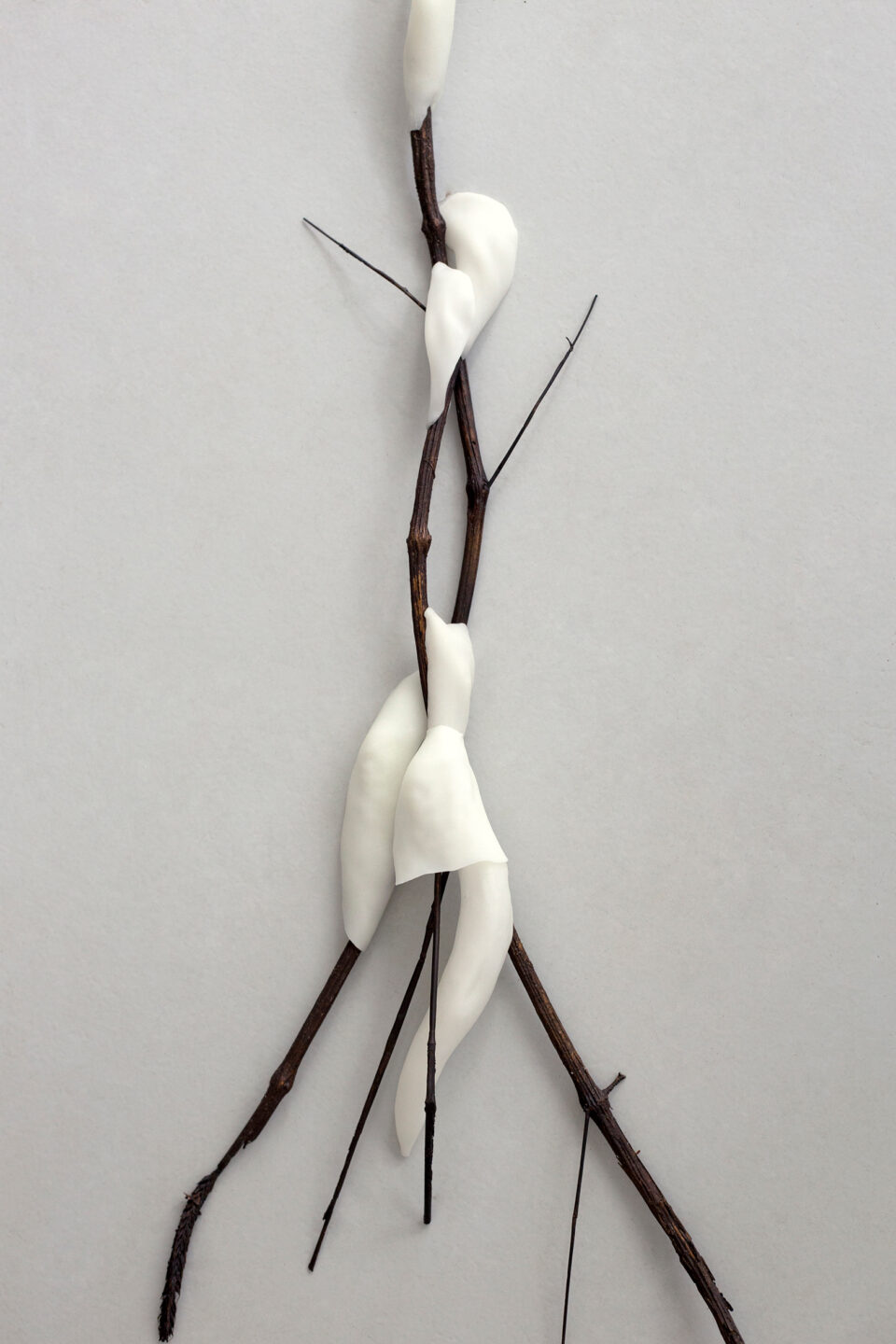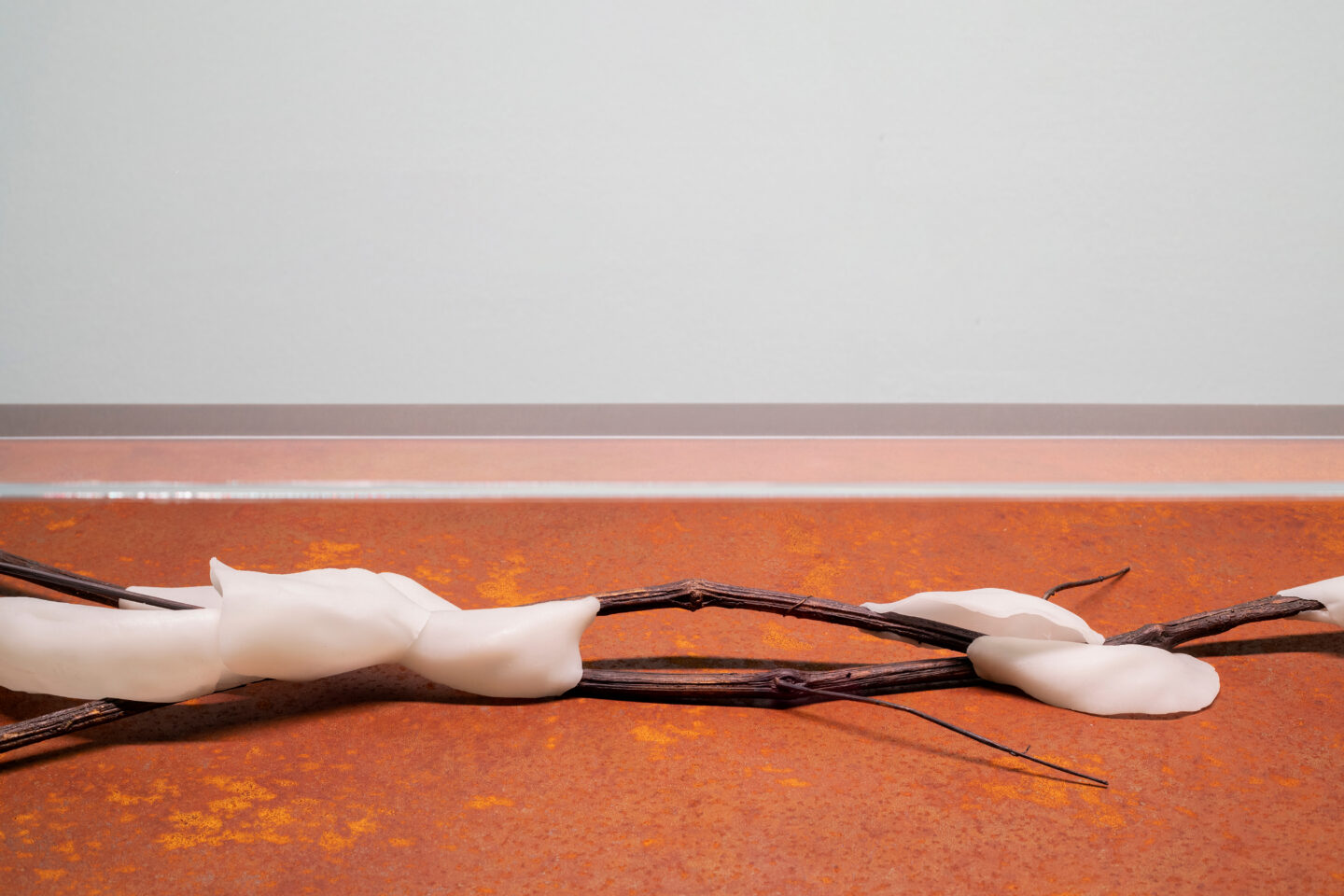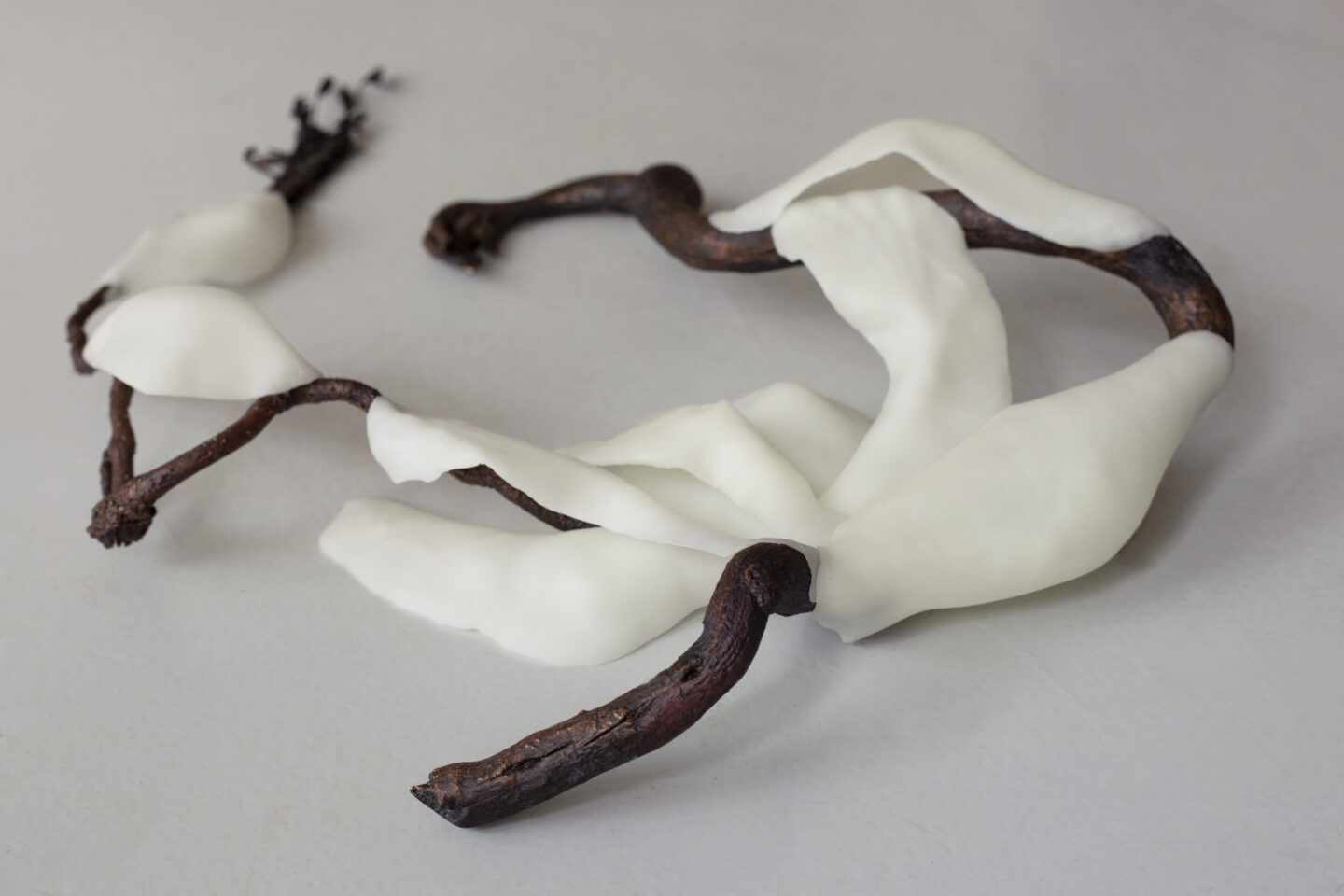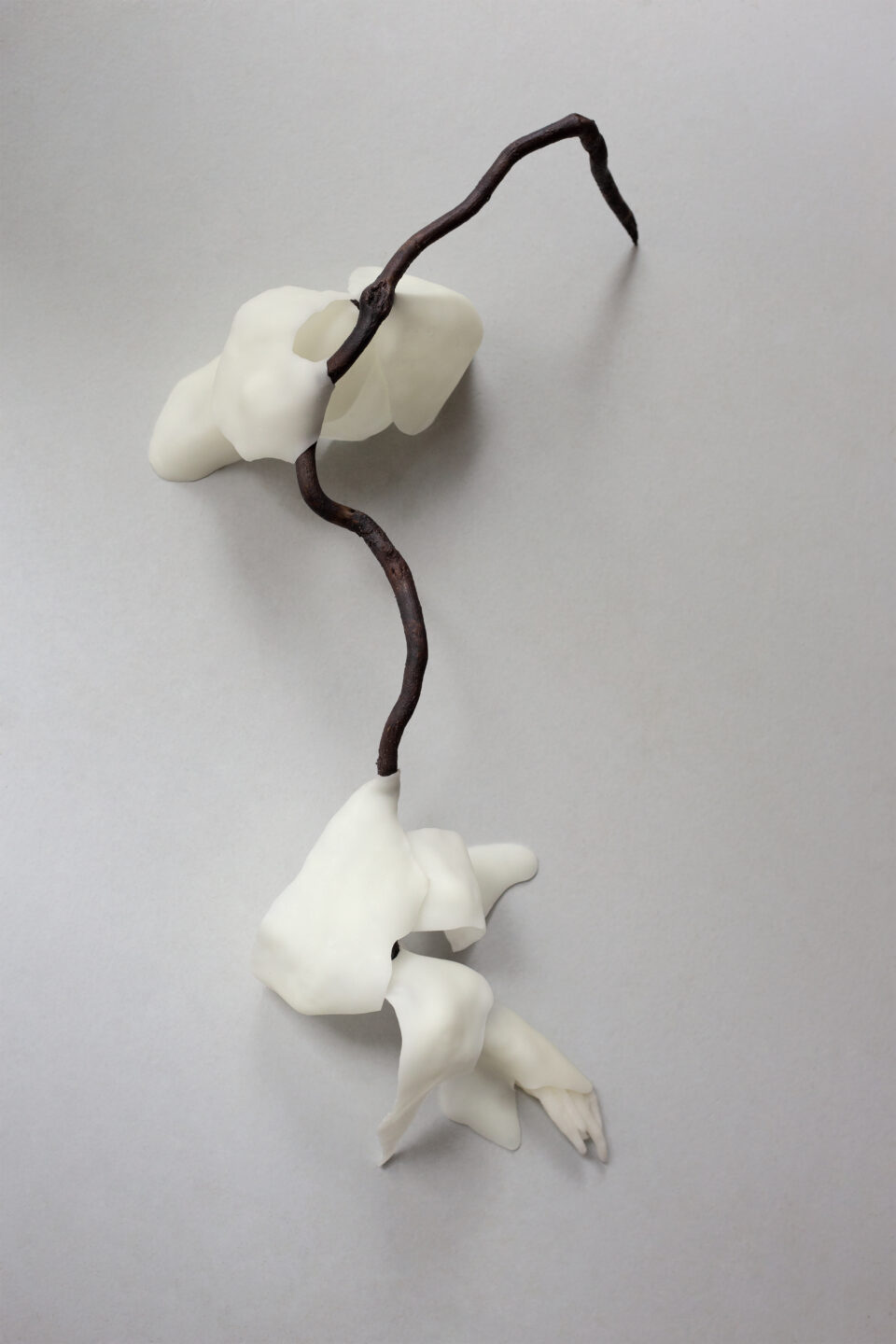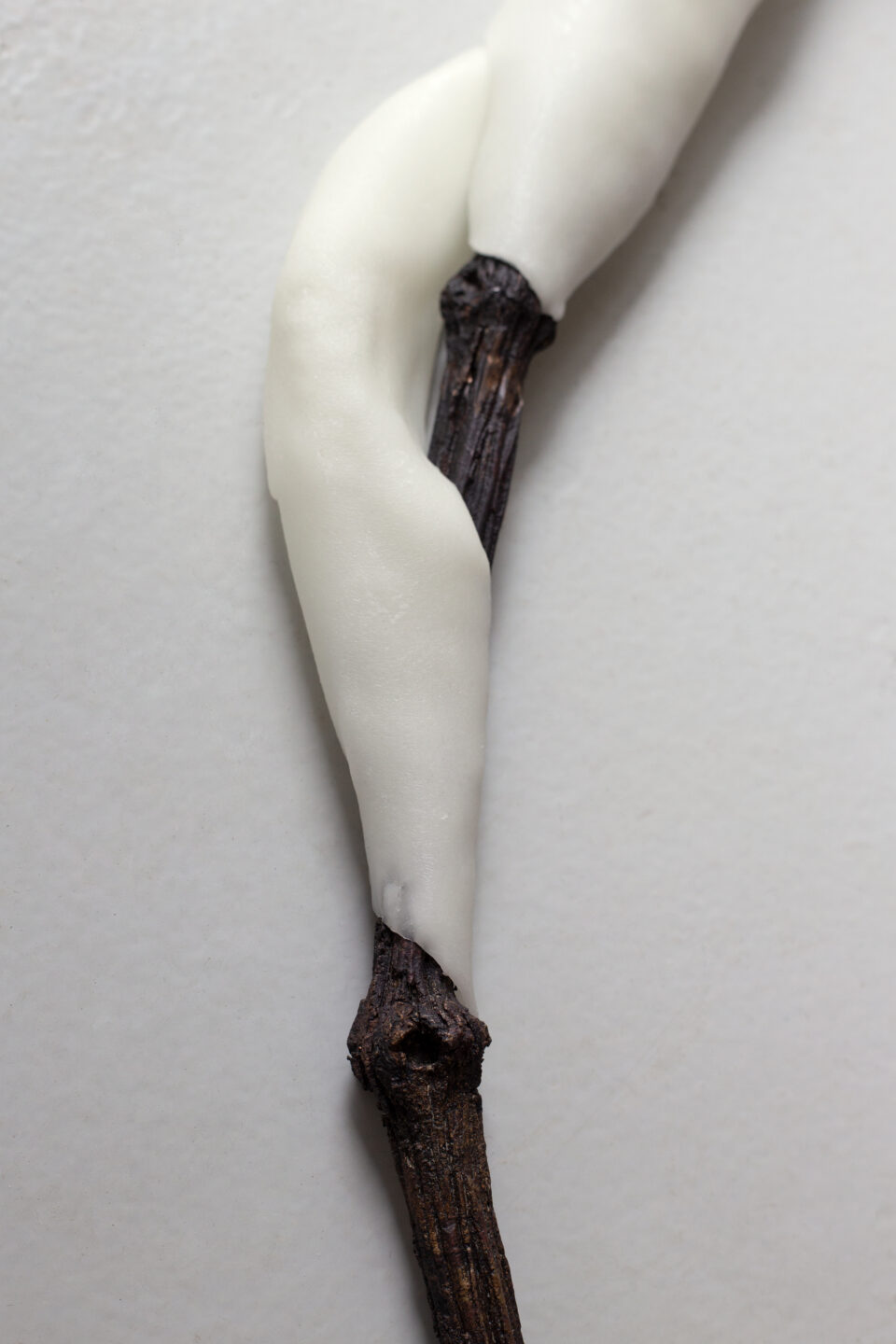In Hybrids (Phasmida Dreaming), beeswax casts of human joints wrap around bronze casts of plant parts and animal elements such as fish bodies or chicken feet. Different material properties come together here – the hardness and coldness of the bronze cast and the potential softness and changeability of the wax material. The artist is concerned with the figure of thought of hybridity, which as a cultural concept no longer assumes homogeneity or purity. Hybridity became a sign of postmodernism as early as the 1990s and is used here as a synonym for prefixes such as multi-, pluri-, inter-, trans-. The concept describes cultural phenomena in which forms combine and different spatial or temporal dimensions can meet. The focus is no longer on dichotomies and binary oppositions, but on linkages, interconnections, combinations, contradictions and paradoxes. The central concern of this approach is to prove that the search for universal standards has become pointless. Questions about the individual or about centre and periphery are also obsolete, because the localisation, identification and demarcation of a world always already points to the fact that this localised, limited and understood world is only a part of other co-existing worlds. — Judith Elisabeth Weiss
